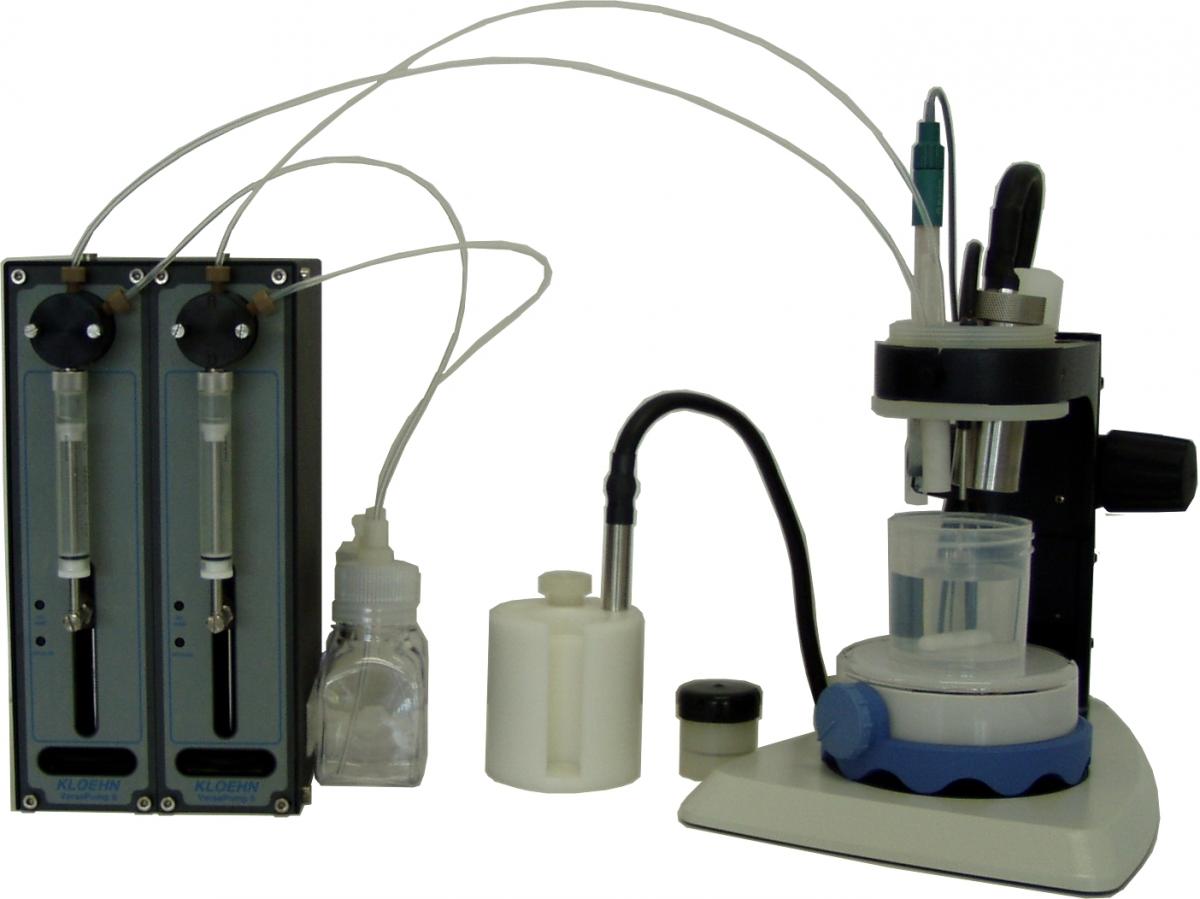3P Dispersion Technology acoustic and electroacoustic spectrometers

Characterization of concentrated dispersions and emulsions by acoustic and electroacoustic spectrometry
Particle size measurement with model DT-100

Model DT-100 has a unique Acoustic sensor for characterizing particle size distribution by measuring ultrasound attenuation at set of frequencies from 1 to 100 MHz, as well as sound speed. This method can be referred to as “ultrasound scattering”.
Application of ultrasound instead of light allows characterization of concentrated opaque sample as is, with no dilution or other sample preparation.
Calculation of particle size distribution from the measured attenuation spectra takes into account particle-particle interaction, which is imperative in concentrated systems.
The same ultrasonic raw data can be used for calculating compressibility, elastic modulus and longitudinal viscosity of any liquid sample, when the Rheological option is installed.
Zeta potential measurement with model DT-300 and DT-310

Models DT-300 and DT-310 have a unique electroacoustic sensor, which is built as a probe for measuring in concentrates without dilution. The same probe can be used for monitotoring sedimentation kinetics.
There is a piezo-crystal inside of the probe that generates sound pulse of certain frequency. These pulses propagate through the sample via the gold central electrode. Ultrasound moves particles relative to the liquid, which displaces double Layers and generates an electric field. This field, in turn, changes the electric potential of the gold electrode. The electric potential of the steel cylinder remains zero because it is outside of the electric field. The electronics measures AC current flowing between the gold and steel. The colloid vibration current predicted by Debye in 1933 is proportional to electrophoretic mobility, which is in turn proportional to zeta potential. Dispersion Technology has verified theory that takes into account both particle-particles hydrodynamic and electrodynamic interactions when calculating zeta potential from the measured electroacoustic signal.
Particle size and zeta potential measurement with model DT-1202

Model DT-1200 has two unique sensors: acoustic and electroacoustic.
The acoustic sensor characterizes particle size distribution by measuring ultrasound attenuation at set of frequencies from 1 to 100 MHz and sound speed. The
same ultrasonic raw data can be used for calculating compressibility, elastic modulus and longitudinal viscosity of any liquid sample (when the Rheological option is installed).
The electroacoustic sensor is built as a probe for measuring in concentrates without dilution. The same probe can be used for monitoring sedimentation kinetics and for characterizing porous materials (when the Porous materials option is installed).
These sensors can function either separately for individual measurements, or together, providing certain synergism in sample characterization.
